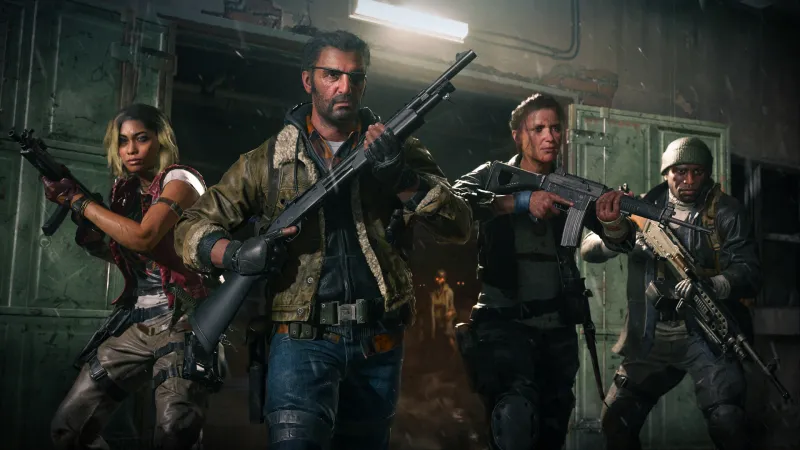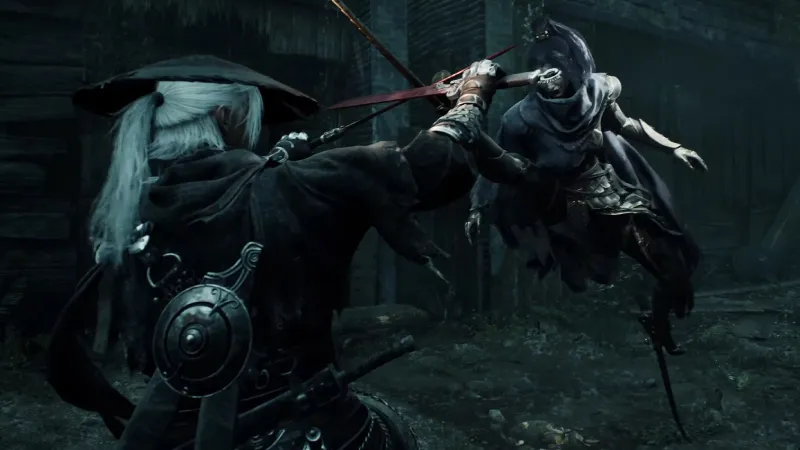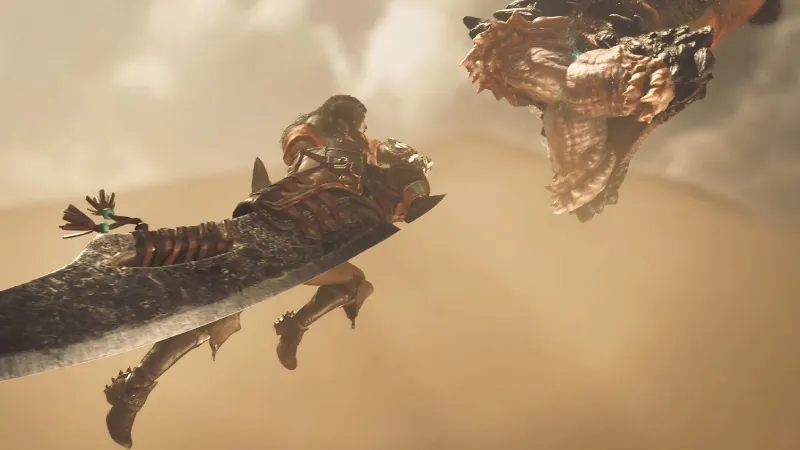The Call of Duty franchise has undergone various transformations since its departure from the World War II setting. From modern and near-future settings to distant-future adventures in space, the franchise has explored the reaches of theoretical conflicts. However, the series may well be at its best when focusing on historical time periods and events, as has largely been the case with Treyarch’s long-running Black Ops series. This subseries, which debuted in 2010, focuses on historical time periods and conspiracies surrounding them, creating narratives ripe with intrigue. Call of Duty: Black Ops 6 looks to carry that tradition forward with a setting in the early ’90s and a story focused on a clandestine entity infiltrating and controlling the government from within. I recently traveled to Treyarch in Santa Monica, California, to learn all I could about the latest entry in the Call of Duty: Black Ops series.
Treyarch hopes Black Ops 6 will serve as a new era for the franchise. A large part of that hope is thanks to the new Omnimovement system, which hopes to emulate the movements of real-world Tier 1 operators. This new system allows you to sprint in any direction, not just forward. And it’s not just cardinal directions, either; you can sprint, slide, and dive in full 360 degrees.
Because Omnimovement touches all parts of the game, it’s the improvement associate creative director at Treyarch Miles Leslie is most excited for. “I think it is going to shift, hopefully, how people approach Call of Duty,” he says. “If you’re a casual, there’s something to learn. If you’re hardcore, also something to learn there, which I think is really interesting. I hope players grow attached to that, as well.”
But the movement improvements don’t stop there, as players can now pull off a supine prone position, which means lying on their back, facing the opposite direction. This change means that if you’re in the prone position, you don’t have to awkwardly shuffle to turn 180 degrees; you can now simply roll from your stomach to your back to quickly look in the opposite direction in prone.
The final major improvement to traversal comes in the form of the Intelligent Movement system, in which the team looks at games like Forza for inspiration. This system, which can be toggled on and customized based on which parts you want to be assisted, aims to give players true fluidity in their movement. With the system’s assists enabled you no longer need to press a button in order to sprint, mantle, crouch, and slide through the map’s various obstacles. Now, you essentially just point your character towards the obstacles and go. I didn’t have the opportunity to try out Intelligent Movement, but during my hands-on session, the Omnimovement and new supine prone position impressed me.
“We want to make sure that if you’re a casual, you can play how you want to play still, but now there’s room for mastery on this stuff,” Leslie says. “So, if you’ve played Call of Duty and you walk slow around the map and you ADS every corner, you can still do that. That’s okay. But it’s still immersive because we have corner-slicing, so you can get those moments to feel like Black Ops has evolved for you. If you’re a more hardcore player and you’re going to use these movements, you can also do that.”
My gameplay session took place on the competitive multiplayer side of the Black Ops 6 package, which receives various upgrades through both new and returning features. A new animation system ensures the action looks better than ever, with shoulders lowering to bash through doors and a new diving animation for when players jump into the water. Character models also have additional hit locations, going from four to nine, meaning the death animations are now substantially more specific to where they were hit. This is accentuated by a new dynamic Deathcam, which now tracks the body after death instead of the previously stationary camera. If you’d rather focus on your successes than your failures, Theater Mode returns to allow you to relive your past glories.
Call of Duty: Black Ops 6 adds 12 new weapons never before seen in the franchise, as well as various devices, including a Signal Lure that tells your opponents where you are and basically challenges them to come and get you. Treyarch warns that this is very much an “if you think you’re good enough” device to deploy. Players can also customize their HUD and utilize the new HUD presets feature.
Treyarch is also bringing back Classic Prestige, with 55 Military Levels. Once you reach the top level, you can choose to Prestige. If you do, you can progress through 10 levels of Prestige, but each time, your unlocks will reset, and you’ll have to earn them again. If you make it all the way through those 10 Prestige Levels, you can work through Prestige Master, which features 1,000 levels, with a classified reward awaiting anyone who dares reach the end of the Prestige Master levels.
At launch, multiplayer will include 16 all-new maps: 12 traditional three-lane maps for 6v6 and 4 smaller Strike maps for modes like Gunfight. Since the multiplayer canonically occurs after the campaign’s events, you’ll revisit some of the locales from the Black Ops 6 story.
Speaking of the Black Ops 6 story, the campaign looks to capitalize on all the espionage intrigue the Black Ops series has become known for and looks to be a true successor to 2020’s Black Ops Cold War. Black Ops 6 takes us to 1991, a full decade after the events of Black Ops Cold War and just two years after the story of 2012’s Black Ops 2. The Soviet Union is no more, and global attention has turned to the Gulf War in Iraq. However, it wouldn’t be Black Ops without some sense of intrigue and conspiracy. An entity known as The Pantheon has infiltrated the highest levels of government, including the CIA, and the Black Ops agents must go rogue to prevent the group from unleashing an apocalyptic series of events.
Going rogue means they can only trust themselves, and they can’t just call on the might of the US military to bail them out. And they must maintain a healthy sense of paranoia – they truly cannot trust anyone. Black Ops 6 leans heavily into the spy-action thriller side of Call of Duty campaigns, featuring global locations, innovative gadgets, and several twists the developers hope you won’t see coming. The developers also use historical touchpoints throughout; one mission I watched takes place during a fundraising dinner for Bill Clinton’s presidential campaign, with a climactic motorcycle chase through the city streets.
As players trot across the globe, they can expect missions like traditional Gulf War operations, a casino heist, spycraft missions, operations that offer player agency, and what the developers simply call “mindf—ery.” And you’ll do so alongside a cast of characters featuring new agents and familiar faces like Woods and Adler.
“We really leaned into the variety of the missions, and in the future I want to do more of that,” associate creative director at Raven Software Jon Zuk says. “I want to make sure that we’re really doubling down on that concept and that every mission feels really different, and we’re almost giving you different gameplay styles and different opportunities, and going from these stealthy, sneaky missions to these big, bombastic kind of crazy, over-the-top things, giving the player choices wherever we’re able to give choices.”
On the Zombies front, Treyarch is bringing back round-based Zombies with a Dark Aether story that picks up right where the story had left off. At launch, players can tackle two maps: Liberty Falls, a bright and sunny map set in a small town in the ’90s, and Terminus, a dark and broody prison island in the middle of the Pacific Ocean. You can choose Zombies-dedicated characters or any of the other Operators. However, you will receive extra story and dialogue if you choose the dedicated Zombies characters.
Everything I saw in Call of Duty: Black Ops 6 made me excited to dive back into the world I first experienced with 2010’s Call of Duty: Black Ops. The series has evolved in myriad ways in the decade and a half since that release, but the intriguing world that Treyarch has crafted in that time has only gotten more enthralling. Call of Duty: Black Ops 6 arrives on PlayStation 5, Xbox Series X/S, PlayStation 4, Xbox One, and PC.













